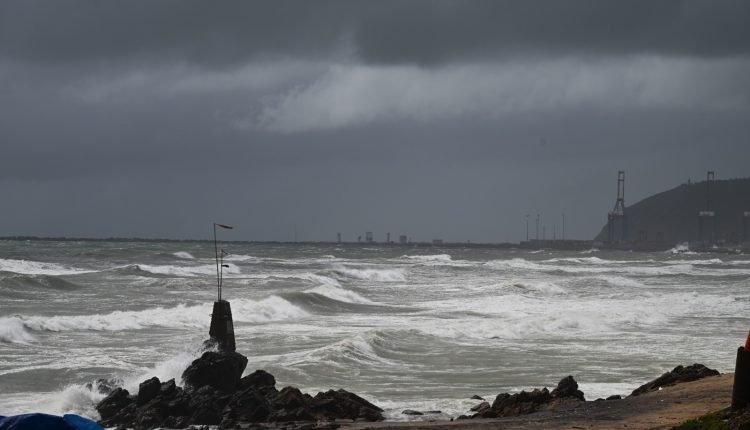Cyclone Montha Weakens After Landfall in Andhra, Spares Odisha Major Impact
After making landfall near Narsapuram in Andhra Pradesh, Cyclone Montha loses strength and drifts away from the coast, leaving Odisha with minimal impact and scattered rainfall.
System Weakens After Crossing Coast
The very severe cyclonic storm ‘Montha’ has weakened into a cyclone after crossing the Andhra Pradesh coast late last night, the Regional Meteorological Centre (RMC) in Bhubaneswar confirmed. Despite initial concerns, Odisha escaped any major impact, with only light to moderate rainfall reported from several southern and northern districts.
At 5:30 PM, the system was centered over the west-central and north Bay of Bengal, about 19 km southwest of Puri, moving north-northwestwards at a speed of around 15 kmph. RMC Director H.R. Mohanty said the cyclone is likely to weaken further and move eastward, away from the coast. “There will be no adverse impact on the state, though heavy to very heavy rainfall is expected in isolated pockets,” she added.
Rain and Wind Across Several Districts
Even as Odisha avoided direct damage, several districts recorded heavy rainfall under the storm’s peripheral influence.
-
Mayurbhanj received the highest rainfall of 105 mm,
-
Balasore recorded 93.8 mm,
-
Khordha saw 98 mm, and
-
Chandbali reported 74.4 mm.
Districts including Malkangiri, Koraput, Nabarangpur, Kalahandi, Gajapati, Ganjam, Rayagada, Sundargarh, Keonjhar, Mayurbhanj, Balasore, and Bhadrak are likely to witness further rain spells accompanied by thunder and lightning.
Wind speeds of 45–55 kmph, gusting up to 65 kmph, were reported in Malkangiri and Koraput, while other regions experienced winds in the range of 35–45 kmph with gusts up to 55 kmph.
Landfall Between Machilipatnam and Kalingapatnam
The landfall process began around 7 PM and continued till 1 AM, hitting the coast near Narsapuram in Andhra Pradesh, between Machilipatnam and Kalingapatnam. The system packed winds of 90–100 kmph, gusting up to 110 kmph, accompanied by torrential rain in coastal Andhra regions such as Machilipatnam, Kakinada, and Nellore.
High tidal waves surged up to 200–500 meters inland, creating rough sea conditions and coastal flooding in some low-lying pockets.
Fishermen Advised Caution
The Meteorological Centre has advised fishermen not to venture into the sea due to high wind speeds and turbulent waves in the Bay of Bengal. The twin cities of Bhubaneswar and Cuttack may experience intermittent showers and lightning activities throughout the day.
Experts: Storm Weaker Than Anticipated
Meteorologists and disaster management officials noted that Cyclone Montha did not intensify as much as early forecasts suggested, sparing both Andhra Pradesh and Odisha from severe destruction. The storm’s rapid weakening after landfall was attributed to cooler sea surface temperatures and increased wind shear, which disrupted its core circulation.
“Although the storm caused heavy rains and local flooding in Andhra’s coastal belt, it failed to match the ferocity predicted in initial bulletins,” an expert said.



Comments are closed.